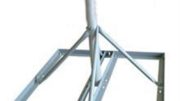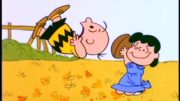Once upon a time, all TV broadcasting was VHF. Most of us either weren’t born or were very young. The original broadcast range of channels 1-13 (here’s what happened to channel 1) was amended in 1948 to include UHF channels starting with channel 14. The very first UHF broadcast was the following year. For much of that time, there was a hope that VHF TV broadcasting would go away. Yet, 70+ years later, here we are.
Why did VHF broadcasting start?
VHF was considered quite advanced in the early days of television. It took very complex equipment, and a massive amount of power, to broadcast up to 300,000 cycles per second. The VHF broadcast range of 30-300KHz was expected to be all we needed. It was wide open broadcast space back in those days, and the goal was to fill it with TV broadcasts.
Unfortunately, the tech of the time let broadcasters down almost immediately. Broadcast equipment wasn’t precise, and if you broadcast on two adjacent channels, they interfered with each other. So, complex rules and maps were drawn so that wouldn’t happen. If your market had a channel 5, it couldn’t have a channel 6. Not only that, none of the other markets surrounding your could have either a channel 5 or a channel 6. (a quick note: there is a gap between channels 4 and 5, between 6 and 7, and between 13 and 14. So you can have those channels in the same market.)
This “sideband protection” scheme meant that in practice, you couldn’t have more than about 7 channels in any city, and depending on the lay of the land you might not be able to have more than 4 or 5 of them.
The whole big world of UHF
UHF broadcasting initially added 69 more channels in order to give broadcasters room to grow. But, UHF was even harder to control than VHF, and took more power to broadcast. From a marketing point of view, major broadcasters didn’t want to be stuck “in the upper channels” where they feared they could not compete.
UHF’s capacity would be cut three times over the years due to its lack of popularity. First, channels 70-83 were given away, followed by 51-69 which were given to burgeoning cell phone users. Finally, this past year, channels 37-51 were auctioned off for even more cellular capacity.
In the meantime, though, technology advanced. It became easier to broadcast on UHF and “sideband protection” wasn’t needed for digital channels.
…which is where we find ourselves today.
Today, there are more VHF channels than there were before. It was hoped that broadcasters would move to UHF once TV went 100% digital, but they didn’t. Those broadcasters with memorable channel numbers often chose to keep them, and that meant keeping the VHF spectrum open to everyone. So, when the valuable 600MHz band went to cellular, more stations moved back to VHF.
We’re stuck with VHF now. It doesn’t work really well for cell phones, because VHF antennas need to be bigger than today’s cell phones. No one wants to walk around with a 6 foot antenna coming off their phone.
However, people are still willing to put a larger antenna on their home, and that’s why VHF television broadcasting will be with us for quite a while to come.
For the best choice of television antennas, shop the great selection at Solid Signal. Most people get dozens of channels of free TV with a one-time purchase. Are you one of them? Are you ready to cut the cord? Call us at 888-233-7563 for the best advice from trained technicians.





